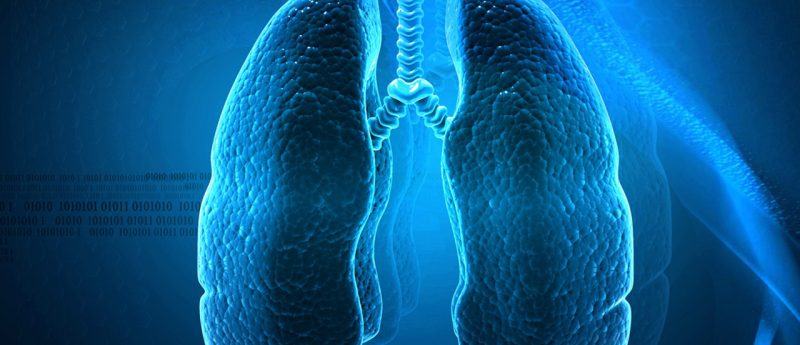Smokers with lung lesions likely to be cancerous could be identified using nasal swab technique

It may be possible to distinguish between benign and malignant lung lesions using a simple nasal swab in patients suspected of having lung disease. Alongside a patient’s clinical information, the new test will prevent costly invasive procedures in those unlikely to have cancer.
The study by the Boston University School of Medicine (BUSM; MA, USA) is entitled ‘Shared Gene Expression Alterations in Nasal and Bronchial Epithelium for Lung Cancer Detection’ and is published in the Journal of the National Cancer Institute.
Lung cancer screening with computed tomography is recommended by US guidelines for those aged 55–80 who are current or former smokers and have quit within the past 15 years after smoking for at least 30 pack-years. Although nearly a quarter of those screened have a pulmonary lesion, the final diagnosis for 95% of these is benign, meaning patients are often receiving unnecessary invasive procedures.
An additional, noninvasive diagnostic approach may now have been developed by the research group led by BUSM medicine, pathology and bioinformatics professor Avrum Spira. The test could eliminate the need for invasive lung biopsies or other diagnostic procedures by identifying patients likely to have benign disease.
“Our group previously derived and validated a bronchial epithelial gene-expression biomarker to detect lung cancer in current and former smokers. This innovation, available since 2015 as the Percepta Bronchial Genomic Classifier, is measurably improving lung cancer diagnosis…given that bronchial and nasal epithelial gene expressions are similarly altered by cigarette smoke exposure, we sought to determine in this study if cancer-associated gene expression might also be detectable in the more readily accessible nasal epithelium” commented Spira.
Nasal swabs from current and former smokers presenting with pulmonary lesions suspected of being cancerous were examined by the team. A total of 535 genes were found to be differentially expressed in lung cancer patients when compared to those with benign disease. High specificity and sensitivity for the identification of those at low risk of having lung cancer was achieved by restricting the analysis to 30 genes combined with patient data (age, smoking status, time since quit and mass size).
Spira stated: “There is a clear and growing need to develop additional diagnostic approaches for evaluating pulmonary lesions to determine which patients should undergo computed tomography surveillance or invasive biopsy. The ability to test for molecular changes in this ‘field of injury’ allows us to rule out the disease earlier without invasive procedures.”
In addition, Marc Lenburg (professor of medicine and co-senior author, BUSM) stated that the results of the study “clearly demonstrate the existence of a cancer-associated airway field of injury” that can be measured in nasal epithelium.
“We find that nasal gene expression contains information about the presence of cancer that is independent of standard clinical risk factors, suggesting that nasal epithelial gene expression might aid in lung cancer detection. Moreover, the nasal samples can be collected noninvasively with little instrumentation or advanced training.”
Sources: The AEGIS Study Team. Shared Gene Expression Alterations in Nasal and Bronchial Epithelium for Lung Cancer Detection. J Natl Cancer Inst 109 (7), djw327 (2017); https://lungcancernewstoday.com/2017/03/09/study-finds-biomarker-for-lung-cancer-detection-in-the-nasal-passages-of-smokers/
